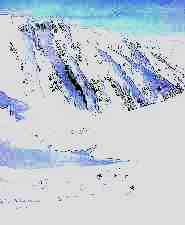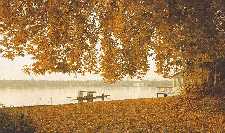 Many a poet has said that if there is a heaven on earth,
it is Kashmir. Srinagar is the capital of the state of
Jammu & Kashmir.Jammu is the summer capital.The main
languages spoken are Kashmiri and Dogri.
Many a poet has said that if there is a heaven on earth,
it is Kashmir. Srinagar is the capital of the state of
Jammu & Kashmir.Jammu is the summer capital.The main
languages spoken are Kashmiri and Dogri.The main occupation of the people here is agriculture. The chief crops are paddy,wheat, barley, and maize. About 15% of the ,area in the state is covered by forests. Kashmir is also famous for its handicrafts. The shawls made here are in demand all over the world.
Sight seeing Tawi In the heart of the old town is the Raghunath temple,built in 1835. In the sanctum sanctorum are beautiful idols of Sri Rama and Sita.The Dogra Art Gallery at Gandhi Bhavan has an important collection of miniature paintings including many from the local renowned schools of painting. On the outskirts of the town, is the Amar Mahal Palace of French architecture. The palace of museum has a family portrait gallery and a collection of paintings.
Transportation Jammu-Srinagar On the way from Jammu to Srinagar,there are a number of places to visit.The Jawahar tunnel which is 2500 meters long is 200 kms away from Jammu and 93kms away from Srinagar.Thirty two kms north-west of Jammu is Akhnoor. The chenab river meets the plains here.Basohli,close to Dalhousie, across the border of Himachal Pradesh is the birth place of the pahari miniature painting style.
Kashmir This beautiful region in India
was summer retreat of the Mughal rulers of India. It was en-route
to Kashmir the Mughal Emperor,Jehengir, died. Some of the gardens
developed by the Mughals are beautifully preserved even to this day.
Around the edge of the vally are Kashmir's delightful hill stations. Pahalgam and Gulmarg are pleasant places for trekking trips. Srinagar the capital city of Jammu&Kashmir stands on the Dal lake and the Jhelum river. Connecting the Dal lake and the Jhelum river there are nine bridges. The Dal Lake is a maze of intricate waterways. It is divided into Gagribal,Lokut Dal and Bod Dal by a series of causeways. Within the lake,there are two islands.They are: Silver Island and Gold Island, both of which are good picnic spots.Both are also known as Char Chinar because they each have four chinar trees on them.The waters of DalLake are very clear. A leisurely cruise around the lake takes a better part of the day including a visit to the Mughal gardens.
Speciality PahalgamThis town is situated at a height of 2130 metres and night time temperatures are warmer than in Gulmarg which is still higher up. A cool River flows right through the town, sorrounded by fir-covered mountains with snow capped peaks rising behind.Sheep rearing is an important occupation here. Pahalgam serves as a base for treks. MamaleswaraOn the opposite bank of the River, a 12th century Shiva temple is situated.Five km away from Pahalgam is Baisaran which offers excellent view over the town and the Lidder valley. Eleven kms. further is the Tulian lake at a height of 3353 metres.It is Ice-covered for most part of the year. GulmargThe name Gulmarg means a meadow of flowers.Gulmarg is situated at a height of 2730 metres and is 52 kms,away from Srinagar.This is India's premier sking resort in winter. Gulmarg offers beautiful long and short walks.It is also an excellent base for trekking. AmarnathThis cave near Pahalgam is a pilgrim centre where thousands of Hindus throng on the full moon day in the months of July/August. Here a natural ice-Linga,the symbol of Lord Shiva reaches its largest size during this period. Leh:Centuries ago this was an important stop on the old caravan silk route from china.Today it is a mililtary base and a tourist centre.The leh palace, built in the 16th century, is now deserted and badly damaged. But,it offers superb view from the roof. Thezanskar mountains across the Indus river,close enough to touch. The palaceis still the property of the Ladakhi royal family. The central prayer room is still preserved. High above the palace is the Red Gompa,built in 1430.It has a three- storey high seated Buddha image. The gompa above though in a ruined condition, offers superb view down on Leh. The Sankar Gompais just two km. away from Leh. it has electric lighting facility and an impressive representation of Avalokitesvara with 100 arms and heads. Transportation Air and Bus services are available
Tourist Information
|
 The Dal lake house boats are one of Kashmir's greatest attractions.
During the British period in India, the rulers of Kashmir would not
allow them to own land in Kashmir. So the Britishers hit upon the
idea of building house -boats.It is said that a visit to Kashmir
is not complete until one has stayed on a house-boat.
The Dal lake house boats are one of Kashmir's greatest attractions.
During the British period in India, the rulers of Kashmir would not
allow them to own land in Kashmir. So the Britishers hit upon the
idea of building house -boats.It is said that a visit to Kashmir
is not complete until one has stayed on a house-boat.